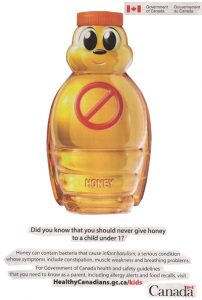Take a dump on Trump
I won’t change my toilet’s name
Your poo orange too.
 Saturday is World Toilet Day, a serious effort by the United Nations focusing on the fact that one-third of the world’s population — or 2.4 billion people — have no toilet at home. A third of those people are children. They are vulnerable to disease, malnutrition and other major problems because there is no clean way of going to the bathroom where they live.
Saturday is World Toilet Day, a serious effort by the United Nations focusing on the fact that one-third of the world’s population — or 2.4 billion people — have no toilet at home. A third of those people are children. They are vulnerable to disease, malnutrition and other major problems because there is no clean way of going to the bathroom where they live.
Marylou Tousignant of The Washington Post writes the United Nations Children’s Fund (UNICEF) and other organizations want everyone in the world to have proper toilets and safe drinking water by 2030.
People living in present-day Scotland and Pakistan built the first indoor toilets about 4,500 years ago. Pipes carried the waste outdoors. Knossos palace, built 3,700 years ago on the island of Crete in the Mediterranean, had some of the first flush toilets. They used rainwater and water from nearby springs. A wooden seat kept users dry.
Medieval castles had toilets built high on an outside wall. There was a stone seat at the top, and gravity took care of the rest. Often the waste dropped into the castle moat. People living in towns, meanwhile, collected their waste in what were called chamber pots, and they emptied them by heaving the contents out a window. Public lavatories, which were not common at the time, were often just several toilet holes in a row built over a river.
In 1596, England’s Sir John Harington designed a flush toilet with a handle and a raised water tank. He said using it would leave rooms smelling sweet. He gave one to his godmother, Queen Elizabeth I, who didn’t like it. Instead, she used a pot in a box covered in velvet and trimmed with lace. The idea of an indoor flush toilet didn’t catch on until 200 years later.
The word “toilet” comes from the French “toile,” meaning “cloth.” It referred to the covering on a lady’s dressing table and, over time, to the dressing room itself and the primping that went on there. (Wealthy people in the 17th and 18th centuries often had rooms at home just for getting dressed.) In the 19th century, “toilet” got its modern meanings: the place where bathing and other private acts occur and the bowl into which human waste is deposited.
Over time, chamber pots and toilet bowls got fancier and fancier. One such pot, sold during the American Revolution, had an image of Britain’s King George III at the bottom of the bowl.
Thomas Jefferson, who used flush toilets while he was the U.S. ambassador to France in the 1780s, had three small rooms for toilets built at Monticello, his home in Virginia. But there is no proof that they were true flush toilets. And because most American homes did not have running water until a century later, the widespread use of flush toilets came later as well.
Chinese businessman Zhong Jiye will not give up the brand name on his Trump Toilet products, NBC News reports.
“We registered our company in 2002 and obtained approval from the trademark office in Beijing,” said Zhong, referring to Shenzhen Trump Industrial Company Limited, which mostly manufactures high-tech toilet seats.
 “If (U.S. President-elect Donald) Trump thinks our trademark violates his rights and interests, he can use legal methods because our company observes China’s laws,” CEO Zhong told NBC News, adding that he is prepared to defend his company’s legal rights to the Trump brand name.
“If (U.S. President-elect Donald) Trump thinks our trademark violates his rights and interests, he can use legal methods because our company observes China’s laws,” CEO Zhong told NBC News, adding that he is prepared to defend his company’s legal rights to the Trump brand name.
In Chinese, the company name means “innovate universally.”
Vicky Hallett of NPR reports that poetry may be one way of getting people to discuss diarrhea.
That’s the idea behind Poo Haiku, a competition created by Defeat DD, a campaign dedicated to the eradication of diarrheal disease.
Although everybody’s had the runs, it’s not something most folks talk about, says Hope Randall, digital communications officer for PATH’s Center for Vaccine Innovation and Access, which created DefeatDD to bring together resources on vaccines, nutrition, oral rehydration therapy, sanitation and more.
Kat Kelley of the Global Health Technologies Coalition, which references a recent study published in The Lancet:
Just six pathogens
But eighty percent of kids’
Diarrheal deaths.
Randall herself penned an entry:
A vicious cycle,
Gut damage, malnutrition
We can halt the churn.
And from Doug Powell:
Take a dump on Trump
I won’t change my toilet’s name
Is your poo orange too.
(Depends whether the word orange is one syllable or two.)
 The statement comes a week after Sandra O’Brien, who was in her 50s, died from suspected food poisoning at a First Communion party.
The statement comes a week after Sandra O’Brien, who was in her 50s, died from suspected food poisoning at a First Communion party. “The investigation is focused on this business. A Closure Order was served on the food business on Friday 19th May.”
“The investigation is focused on this business. A Closure Order was served on the food business on Friday 19th May.”











